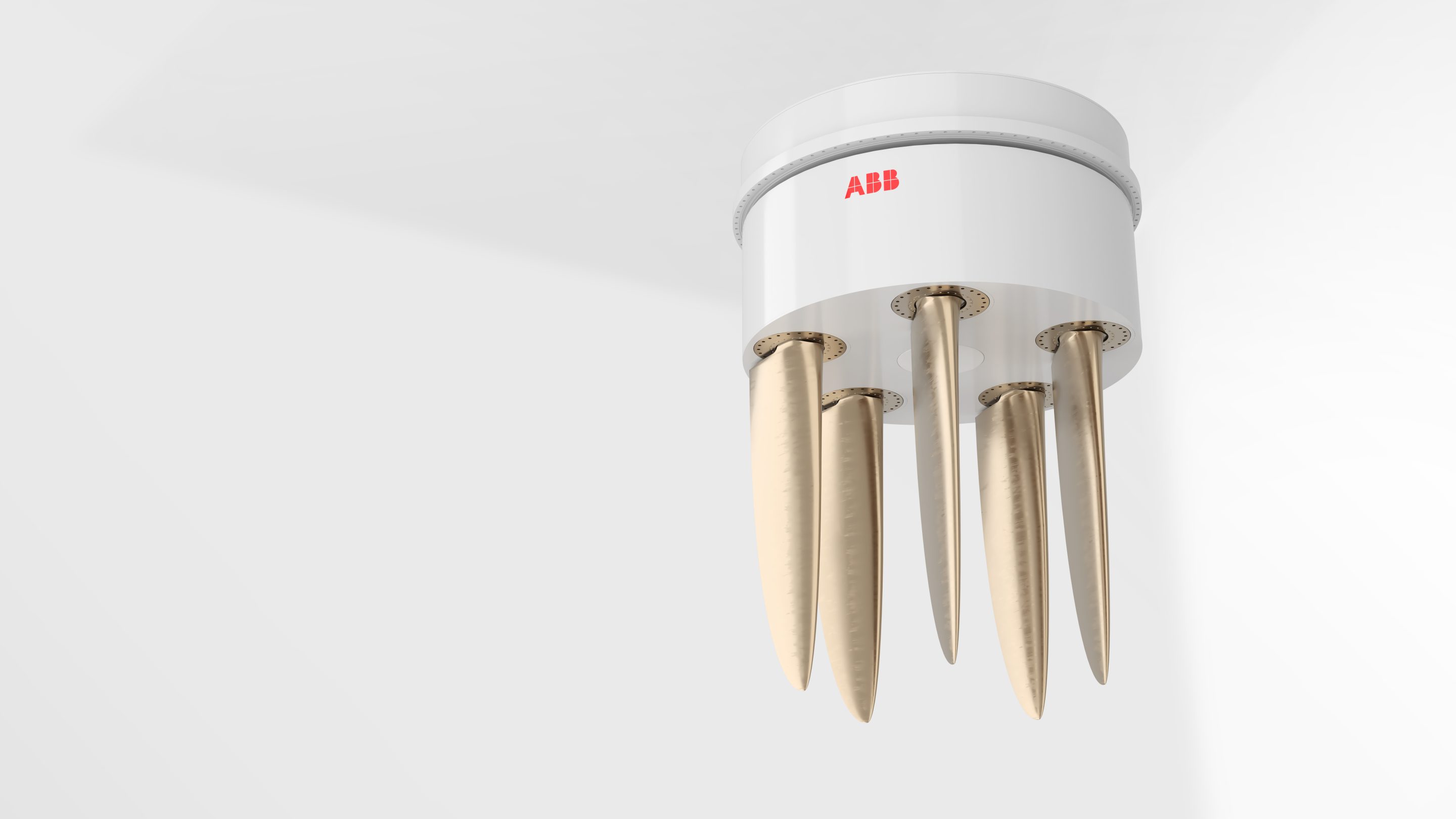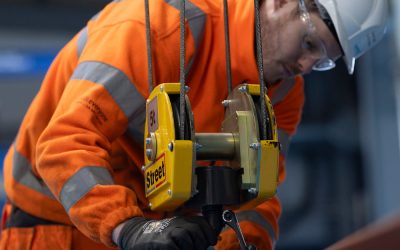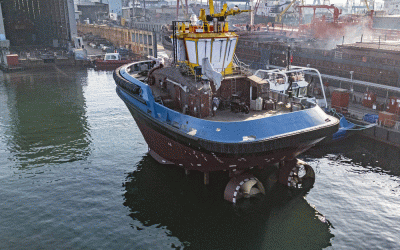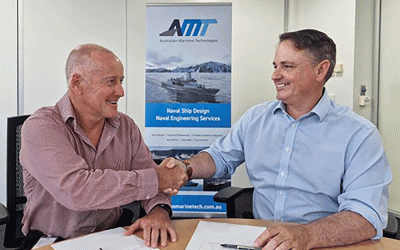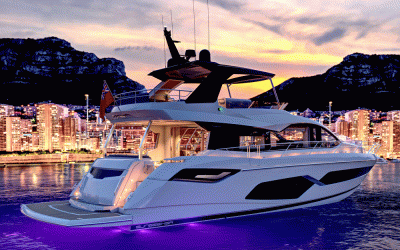Cycloidal (or vertical axis) propellers have, frankly, been a bit ‘niche’ – until now, writes Stevie Knight. Although their ability to change thrust direction almost instantaneously has proven very useful for tugs and ferries, their Achilles Heel has been speed.
So, the most important point about ABB’s new Dynafin is that it promises to deliver 30knots, and potentially more. The second point (rather sadly) is that it doesn’t look anything like the whale’s tail that it’s been modelled on – at least superficially. While it would have been nice to see vessels fitted with flapping tails, the propeller’s action is almost as hypnotic as watching a marine mammal swim. Janne Pohjalainen, ABB global product line manager, tells Ship & Boat InternationaI: “If you look at how a whale tail actually moves, you see, while it’s going downwards, the trailing edge kind of points upward, and during the movement up, it points downward – all in a fluid motion.”
The smooth, sinusoidal track of the tail offers a precisely angled surface for maximum push at the same time as avoiding unnecessary resistance. Despite five fins set so the thrust effect is more like a shark’s swim pattern, “in essence, the Dynafin is moving the water in exactly the same way,” Pohjalainen says.
The apparent simplicity is deceptive. The standard method of achieving a similar motion is to seat blades around a large-diameter rotating disc, powered either with a bevel gear or, more recently, with a high-torque permanent magnet motor. However, to angle these circling blades for the greatest thrust, they’re usually mechanically linked to the rotation of this main drive through an off-centre pivot. This epicycloidal motion works very well to create high bollard pull, Pohjalainen explains: that is, as long as you’re not moving too fast through the water. However, a vessel underway is a different story: these blades then tend to interact with the wake as they turn, creating drag. “You’re practically always forced to flip the blades through a braking angle on the way round, often 90° to the flow,” he says. “It has a huge impact and, in practice, means that this kind of propulsion has a certain upper speed limit…above 13-15knots, it really starts to struggle.”
In contrast, ABB’s bio-mimicking development has fins that avoid a fixed link. It’s not just the main disc; each blade is driven by a dedicated high-torque permanent magnet motor. “In practice, this means there are no gears and no mechanical drive train,” Pohjalainen says, so individual blade trajectories can be altered in real time. Most importantly, it promises to deliver power with heightened control – these units will have a very fast response as they will be able to change the fins’ angle of attack even when the vessel is moving at 25knots.
Higher efficiencies
In short, the Dynafin can utilise blade trajectories with different characteristics: a trochoidal path enables highly efficient transit speed, while greater bollard pull and DP operations can be met by the more looping epicycloidal motion. “Standard thrusters using screw propellers currently achieve open water efficiencies in the range of 60-70%,” Pohjalainen continues. While that’s not to be sniffed at, the Dynafin “targets efficiencies in the range of 80-85%”, he adds. Further, the Dynafin retains its edge all the way up to 30knot vessel speeds.
Despite the Dynafin’s apparent novelty, the theory has been understood for decades – so why has it taken so long to be realised? Pohjalainen explains: “There had to be enough computing power available to enable the control calculations to take place in real time.” That level of processing is relatively new.” It’s also worth noting that this development had to be underpinned by mature technology. For example, electrical power, data transmission and fluids all need to be conveyed seamlessly from the static regions of the Dynafin to the rotating components. It could have been too tricky, but Pohjalainen notes: “That’s something we have been practicing for the past 30 years with our Azipod units.”
Since the Dynafin fits into a roughly similar location on the hull as a typical screw propeller, it could be installed on a similar range of vessels. “Initially, we are working on four frame sizes with a power range of 1-4 MW,” Pohjalainen says, adding that the preliminary dimensions run from 3.3m to 5.3m in diameter (with blade lengths of between 2.5m and 4m). However, Pohjalainen emphasises, the value proposition is generally aimed at those running upward of 4,000 hours per annum. Therefore, segments that combine high-speed transit, fast thrust response and extended endurance will likely be the first to benefit.
